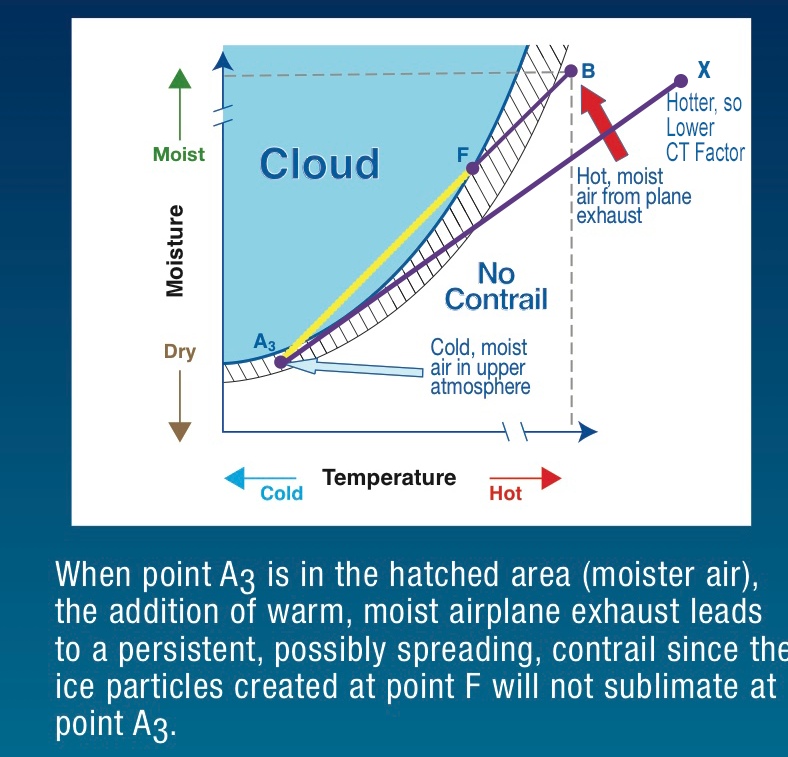http://onlinelibrary.wiley.com/doi/10.1002/joc.1418/abstract
US jet contrail frequency changes: influences of jet aircraft flight activity and atmospheric conditions
David J. Travis1,*, Andrew M. Carleton2, Jeffrey S. Johnson3, James Q. DeGrand4
Article first published online: 9 OCT 2006
DOI: 10.1002/joc.1418
International Journal of Climatology
Volume 27, Issue 5, pages 621–632, April 2007
In the United States, the dramatic increase in jet fuel usage and kilometers flown has led to speculation of a similar increase in jet contrails. However, contrail occurrence depends heavily upon the meteorological conditions near cruising altitudes (i.e. the tropopause, 10–12 km altitude). This study reports a contrail mid-season contemporary climatology for the coterminous United States (2000–2002), and compares the frequencies with those previously reported for an earlier (1977–1979) period, to determine spatial and seasonal contrail frequency changes. For both climatologies, contrail occurrence is derived from the analysis of high-resolution satellite imagery. Data on US jet aircraft flight activity were obtained to assess their relationship to contrail frequency, as were NCEP-NCAR reanalysis data to determine the changes in tropopause-level atmospheric conditions.
For the 2000–2002 period, contrails comprise a distinct high (low) frequency pattern in the East (West) halves of the United States. Seasonally, there is a contrail association with the latitudinal migration of the jet stream and a US-wide peak contrail frequency during winter (January). The inter-monthly variations in contrail frequency are significantly different from each other but show no association with variations in jet flight activity, indicating a greater role for meteorological conditions. Between the 1977–1979 and 2000–2002 periods, there were strong spatial and seasonal asymmetries to the contrail frequency change. These involve a cooling (warming) of the tropopause for the largest (smallest) frequency increases, which shows some association with the switch in positive and negative phases of the Arctic Oscillation. The role of upper tropospheric conditions and links to hemispheric-scale teleconnections should be considered when projecting contrail frequency changes and their future impacts on climate.

